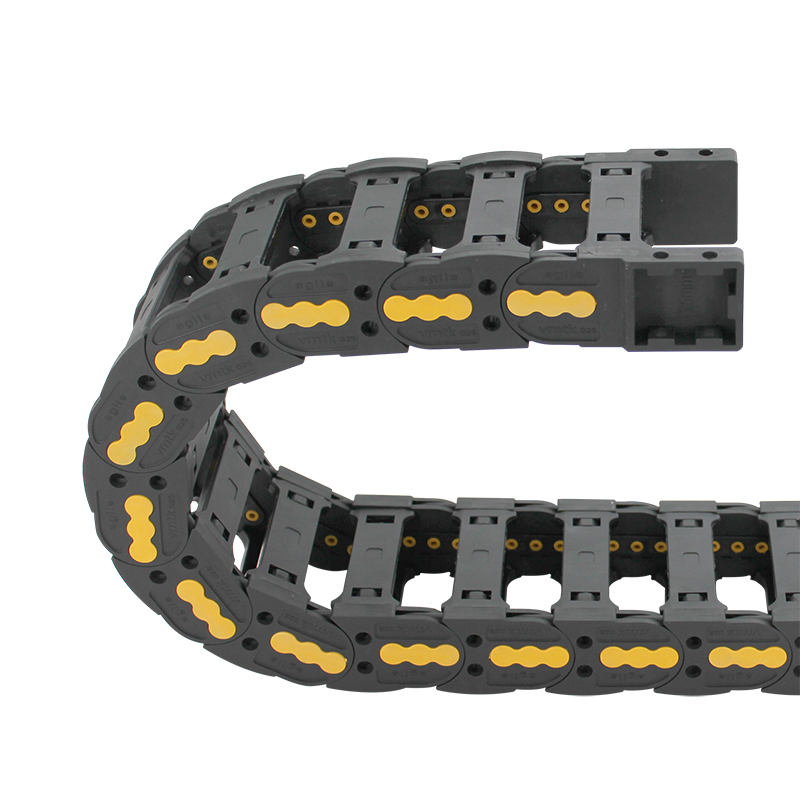Understanding Cable Carrier Tracks and Their Applications in Modern Industry
The Importance of Cable Carrier Tracks in Modern Industrial Applications
Cable carrier tracks, also known as cable chains or drag chains, have become indispensable components in a wide array of industrial applications. These systems are designed to organize and protect cables and hoses, allowing for smooth and efficient movement in automated processes. Whether in manufacturing plants, robotics, or CNC machinery, cable carrier tracks play a vital role in ensuring operational efficiency and safety.
What Are Cable Carrier Tracks?
Cable carrier tracks are flexible and modular systems that house and guide cables, wires, and hoses. They consist of interconnected links that can bend and rotate, enabling the free movement of cables while preventing tangling or damage. These tracks are usually made from robust materials such as plastic or steel, which provide durability and resistance to wear and tear.
The design of cable carrier tracks varies considerably depending on their application, with features such as customizable lengths, widths, and heights to accommodate different needs. Additionally, they can be configured to suit a variety of environments, including those that are harsh, high-temperature, or exposed to chemicals.
Applications in Industry
1. Manufacturing In industrial settings, cable carrier tracks are critical in assembly lines where machinery must work cyclically and in proximity to one another. They allow machines to efficiently run without the risk of cables getting snagged or wear down, minimizing downtime.
2. Robotics In robotics, especially in automated guided vehicles (AGVs) and robotic arms, cable carrier tracks ensure that power, control, and data cables remain organized and accessible. This organization facilitates the precise movement of robots without hindrance or cable damage, which is crucial for maintaining functionality.
3. CNC Machining CNC machines often have multiple axes that require intricate movements, making cable management essential. Cable carrier tracks help guide the cables that power these movements, reducing the risk of misalignment and equipment failure. Efficient cable management also contributes positively to the machine’s longevity.
cable carrier track

Benefits of Using Cable Carrier Tracks
The benefits of integrating cable carrier tracks into industrial operations are numerous
- Enhanced Safety By securing cables and hoses in an organized manner, the risk of accidental disconnections or trips is mitigated, creating a safer work environment.
- Improved Efficiency Cable carrier tracks streamline operations by allowing for freer movement of machinery and equipment, thus enhancing overall productivity.
- Reduced Maintenance Costs By protecting cables from wear and tear, cable carrier tracks prolong the lifespan of wiring systems, ultimately leading to lower maintenance and replacement costs.
- Customization The ability to customize cable carrier tracks according to specific industrial needs adds versatility, making them suitable for a broad range of applications.
Future Trends
As technology continues to evolve, so too does the design and functionality of cable carrier tracks. Innovations in materials, such as the introduction of lightweight composites, and advancements in modular designs are paving the way for even more flexible and robust solutions. Moreover, the growing emphasis on automation and robotics will likely drive further demand for efficient cable management solutions, reinforcing the integral role of cable carrier tracks in future industrial environments.
Conclusion
Cable carrier tracks are a significant yet often overlooked component of modern industrial applications. Their ability to enhance safety, improve efficiency, and reduce maintenance costs makes them essential in various sectors, including manufacturing, robotics, and CNC machining. As industries continue to evolve, the importance of these systems will only grow, solidifying their place as fundamental elements in the machinery of the future.








